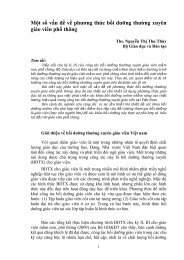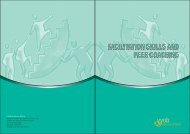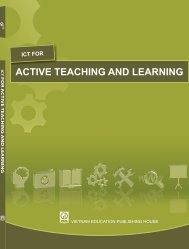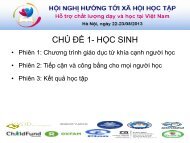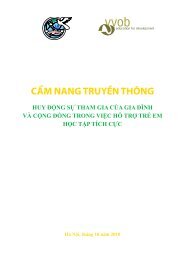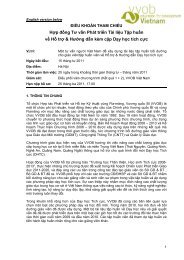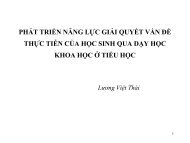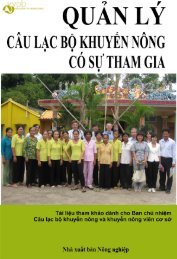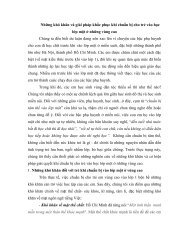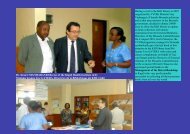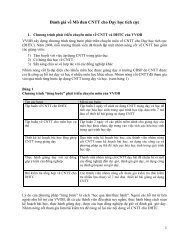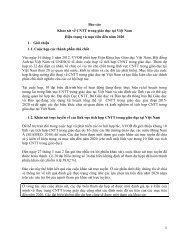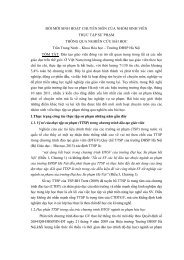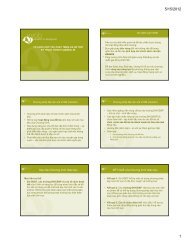districts to strengthen their role in providing children with integrated life skills that relate to he alth,nutrition, care of the environment… Example setting on how to dispose of waste, use of scarce water,the nutritional value of the school meals, how activities such as growth monitoring are linked tolearning… Schools become resource centres for the community, parents can become involved as―experts‖ on traditional dishes etc. (not clear, could be reformulated...The Ministry of Education and other stakeholders, including Healthy Learning, have also initiated andencouraged schools to set up micro projects such as beekeeping, goat rearing, school vegetablegardens, fruit tree orchards, water harvesting… to supplement the school meals (directly or indirectly).The Ministry of Education continues to run school meals programmes in Arid and Semi Arid Land(ASAL) regions. MOE, with support from the Government and development partners, is encouragingsustainable and integrated alternatives to the current school meals approach – that also increase thehealth and nutritional status of children. One such alternative approach Home Grown School Meals(HGSM) programme, whereby food is purchased from local markets or farmers near the schools, wasintroduced in a number of schools in 2009. Funds are directly transferred to the schools by theMinistry of Education. Lessons learned from Phase I of Healthy Learning have already proven veryvaluable for the further development and future roll out of the HGSM programme.Subresult 2.1Capacity strengthened of 8 model districts and 30 model schools in Healthy Learning, with a focus onimpact and sustainability.The experiences of the first phase of Healthy Learning will be deepened, through further support andcapacity development of the 30 schools in 8 districts. They will become ―model‖ schools and districtsand will be setting examples for others through, a.o.:Officers at district level and school managers attending workshops with sessions on learningaspects, curriculum links, proposal development, and fundraising.Schools acquiring and using relevant learning resources in support of Healthy Learning.Sharing the knowledge and skills gained with more stakeholders in the model districts and modelschools, as well as with parents, School Management Committees (SMCs) and the widercommunity.The programme will organise training, follow-up activities etc to further develop managerial skills of theschool and district managers. For teachers, training will be organised to increase their didactic andpedagogic skills to integrate ―project‖ activities into normal teaching, to implement the curriculum.Some capacity strengthening activities will bring staff from the schools in the same or from otherdistricts together. Some activities will be school based. Efforts will be made to use distance learningand e-learning, and integrate ICT in the capacity strengthening activities (linking with the ICTIntegration sub-programme) and for sharing of experiences, monitoring and evaluation.Subresult 2.2.Relevant income-generating and learning activities implemented in 30 Healthy Learning modelschools.The programme will strengthen the outcomes of phase one, at school level, through initiatives, suchas:Capacity development regarding proposal development for income-generating and learningactivities related to Healthy Learning.Assessment of progress of schools micro projects .Capacity development on management of small grants to schools.Support to model districts and model schools in approaching relevant partners for their HealthyLearning activities.Organizing monitoring and technical support visits to schools.Organizing exchange visits between model schools and model districts.<strong>Kenya</strong> - <strong>Multi</strong>-<strong>Year</strong> <strong>Programme</strong> <strong>2011</strong>-<strong>2013</strong> 58/148
Subresult 2.3Healthy Learning model districts and model schools are actively sharing their approaches, stories, andsuccesses with other districts and schools<strong>Multi</strong>-sector stakeholder coordination at district level is crucial to harness available resources(operational funds, equipment and personnel) of the different ministries (education, health, agriculture,water & irrigation, public works…), non-government agencies, private sector… to benefit the childrenand their families. In the original approach for Phase I, it was suggested that the programme wouldsupport setting up special coordination forums. However, it was soon realised that this would not besustainable. We learned that coordination is best done through existing mechanisms. The programmewill also encourage the involvement of the new committees (to be) established through the SchoolHealth Policy.This can be achieved by, o.a.:Encouraging Healthy Learning model schools to invite neighbouring schools for study visits.Lobbying and advocacy for putting Healthy Learning on the agenda of meetings of the DistrictSteering Groups (DSGs), District Education Boards (DEBs), District School Health CoordinationCommittees, Divisional School Healthy Coordinating Committees and Zonal/Locational SchoolHealth Committees.Sharing of the Healthy Learning approach in Provincial School Health Coordinating Committees.Result 3The Ministry of Education has integrated approaches and lessons learned from Healthy Learning inteacher support activities related to school health, nutrition and meals.Achieving national targets (set in KESSP) for improved School Health, Nutrition and Meals will requireefforts of all teachers, school and district managers. Towards the end of Phase I, the programmestarted to bring together practical experiences of the programme (and from other districts, othercountries…) to develop a relevant teacher support module. These materials will be further fine tunedin Phase II an d will be used by MOE, through existing and future staff capacity developmentprogrammes, such as ―INSET‖.Sub-result 3.1Healthy Learning teacher support module available.This will involve activities such as:Compilation of additional materials for the teacher support module.Integration of additional materials into teacher support module about Healthy Learning.Organization and facilitation of a writeshop to finalize the teacher module. Editing and lay-out of theHealthy Learning teacher module.Subresult 3.2Use of the Healthy Learning teacher support module promoted by the Ministry of Education.The programme will make the module available and encourage its use in the 8 model districts. It willfurther encourage other partners and stakeholders within the SHN&M investment programme to makeuse of the Healthy Learning materials in their interventions in other geographical areas .Subresult 3.3Set of criteria developed for assessment and “certification” of Healthy Learning in schools.To encourage other schools to adopt the Healthy Learning approach, the Ministry of Education intendsto adopt a certification system. This will be developed, through activities such as:<strong>Kenya</strong> - <strong>Multi</strong>-<strong>Year</strong> <strong>Programme</strong> <strong>2011</strong>-<strong>2013</strong> 59/148



